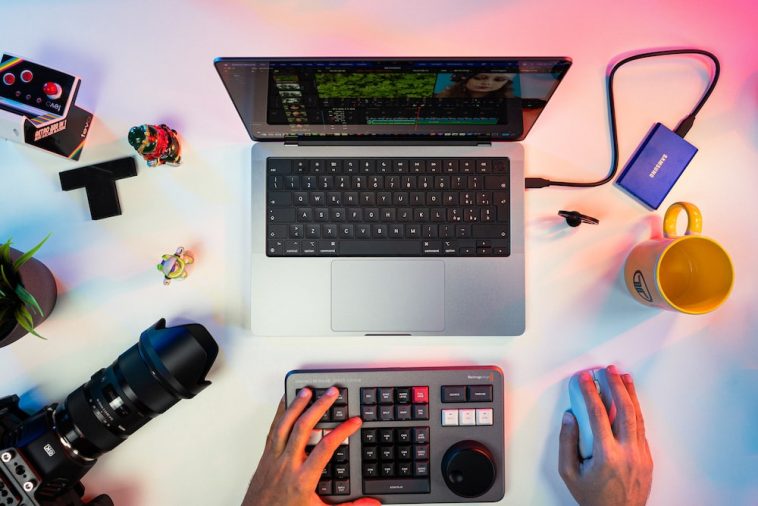Introduction.
Video editing is a core skill for anyone who creates content online, whether for YouTube, social media, or personal projects. It’s that magical step where raw footage transforms into something polished, engaging, and ready for viewers.
Knowing how to edit effectively can set your videos apart, helping you communicate your message clearly, create emotional impact, and keep your audience hooked from start to finish. It’s also one of those skills that takes your content from “just okay” to truly memorable.
Editing might feel intimidating, especially if you’re just starting. Between cutting clips, adjusting audio, adding effects, and ensuring your video flows smoothly, there’s a lot to consider.
But it doesn’t have to be overwhelming. With a bit of guidance and some practice, you can learn the essentials and start editing like a pro.
In this guide, I’ll walk you through everything you need to know about editing your videos. We’ll look at the basic steps of the editing process, review some popular editing software, and dive into the benefits and challenges of doing it yourself.
By the end, you’ll have a clearer understanding of what it takes to edit videos that look professional, feel authentic, and connect with viewers. Let’s get into it!
Why Video Editing Matters for Content Creators
Video editing isn’t just about making things look nice. It plays a huge role in storytelling, pacing, and keeping viewers engaged.
With video content expected to account for 82% of all online traffic in 2024, the quality of your videos has a direct impact on your reach and retention.
Whether you’re crafting quick clips for social media or long-form YouTube videos, solid editing can:
- Improve Watch Time: Edited videos are smoother and easier to follow, so people are more likely to watch until the end.
- Increase Engagement: Thoughtful edits, effects, and cuts can create a more engaging experience, encouraging comments, shares, and likes.
- Build Your Brand: Editing gives you a chance to develop a unique style or signature that your audience will recognize and remember.
How Do I Edit My Videos as a Content Creator?
Here’s a quick rundown of the basic steps in the video editing process. Each step can be as simple or as advanced as you want it to be, depending on the style and message of your content.
1. Import Your Footage.
Start by transferring your raw footage into your editing software. Organize your clips by scenes or shots to make the editing process smoother.
2. Trim and Arrange.
Cut out unnecessary parts and arrange clips in a sequence that tells your story clearly. Try to keep transitions smooth, as abrupt cuts can disrupt the viewer’s experience.
3. Add Transitions and Effects.
Use transitions to connect clips seamlessly. Simple effects, like zoom-ins or overlays, can add depth and interest without overwhelming the viewer.
4. Adjust Audio.
Ensure audio levels are consistent throughout the video. Background music and sound effects can also enhance the atmosphere of your video, but make sure they’re not too loud or distracting.
5. Color Correct and Grade.
Adjust the brightness, contrast, and colors in your video. This step can help create a consistent look and feel, especially if you’ve shot in different lighting conditions.
6. Export and Share.
Choose the right export settings for your platform, as these can affect video quality and file size. Once it’s ready, hit upload!
Pros and Cons of Editing Your Own Videos
Video editing can be a rewarding experience, but it’s not without its challenges. Here’s a quick breakdown of the pros and cons.
Pros:
- Creative Control: When you edit your own videos, you have complete control over the final product. You can make sure your vision is brought to life exactly as you imagined.
- Cost-Effective: Hiring a professional editor can be pricey, especially for new creators. Editing yourself can save a lot of money in the long run.
- Learn a Valuable Skill: Video editing is a highly marketable skill. The more you practice, the faster you’ll get, and you might even open up new opportunities, like freelancing or collaborating with other creators.
Cons:
- Time-Consuming: Editing can take a lot of time, especially when you’re just starting. A ten-minute video can easily require hours of editing.
- Learning Curve: There’s a lot to learn, from software navigation to specific editing techniques. The process can feel slow and frustrating at first.
- Technical Requirements: Some editing software requires a powerful computer, which might mean investing in better equipment if you want to edit efficiently.
Choosing the Right Video Editing Software
There’s no shortage of editing software available, from free apps to professional-grade programs. Here are a few popular options:
- iMovie: Free and beginner-friendly, iMovie is a great choice for Mac users who want to learn the basics.
- DaVinci Resolve: Known for its powerful color grading tools, DaVinci Resolve has a free version with features that are often seen only in premium software.
- Adobe Premiere Pro: One of the industry standards, Premiere Pro is powerful and versatile, though it does come with a learning curve and a monthly subscription fee.
- Final Cut Pro: Available for Mac, Final Cut Pro offers a mix of power and simplicity, making it popular among many content creators.
Each software has its own strengths and limitations, so choose one that fits your needs and budget. Many programs also offer free trials, which can be a good way to see if it’s a good match.
FAQs
Q: How long does it take to edit a video?
A: It really depends on the type of video and your experience level. For beginners, editing a 10-minute video can take 4-6 hours or more. As you get faster, that time should decrease.
Q: Do I need an expensive computer to edit videos?
A: Not necessarily, but a faster computer can make editing smoother, especially for longer videos or complex edits. Many people start editing on basic laptops or desktops and upgrade later if needed.
Q: How can I make my video look more professional?
A: Use a combination of good lighting, clean cuts, appropriate music, and consistent color grading. Small improvements in each area can make a big difference in the overall quality.
Q: Are there free resources for learning video editing?
A: Yes! YouTube has tons of free tutorials on editing for different software. Sites like Udemy, Skillshare, and Coursera also offer affordable courses if you prefer more structured learning.
Q: What’s the best way to improve my editing skills?
A: Practice is key. Try to edit as often as possible, experiment with different techniques, and watch videos by creators whose style you admire. You’ll learn a lot by observing how they use pacing, effects, and transitions.
Wrapping Up
Mastering video editing can elevate your content and help you connect with your audience in more meaningful ways. It’s a skill that takes time, patience, and practice, but the results are well worth it.
Whether you’re creating videos for fun, building a brand, or hoping to make a career out of it, editing gives you the tools to bring your vision to life.
What do you think—do you feel ready to dive into editing your own videos, or are you considering working with an editor to get the look you’re after?





GIPHY App Key not set. Please check settings